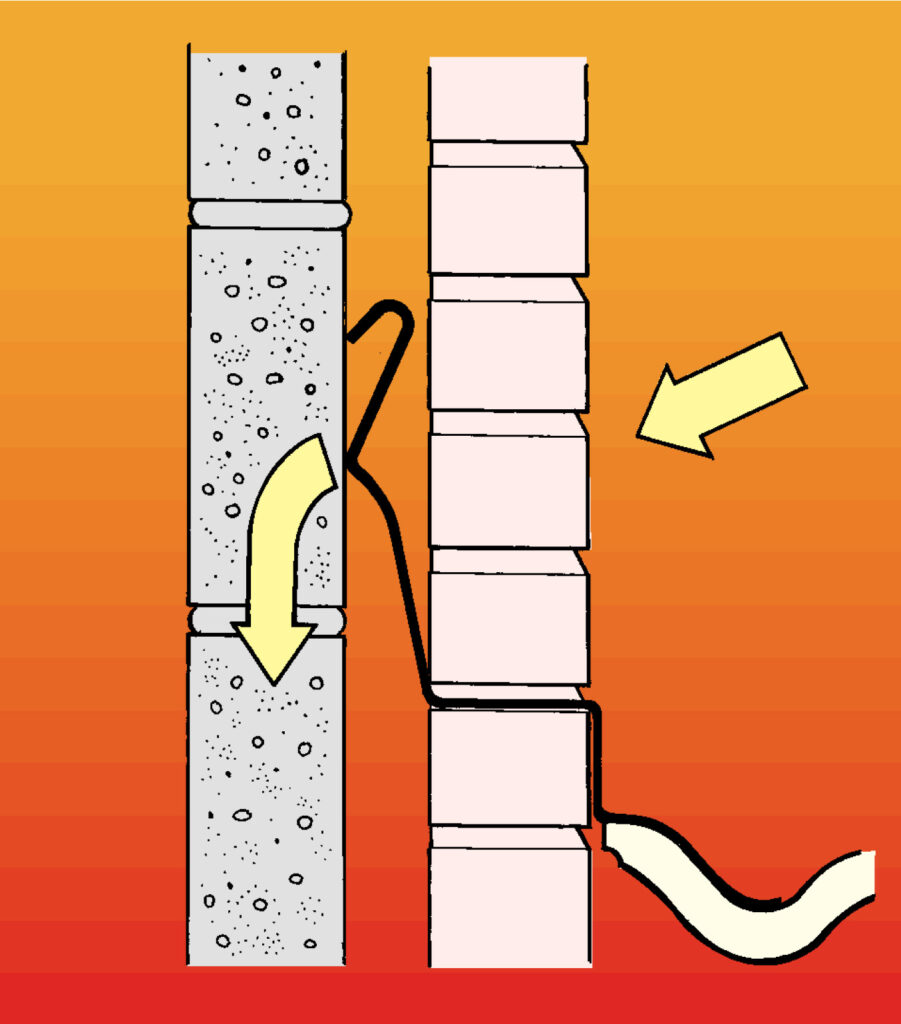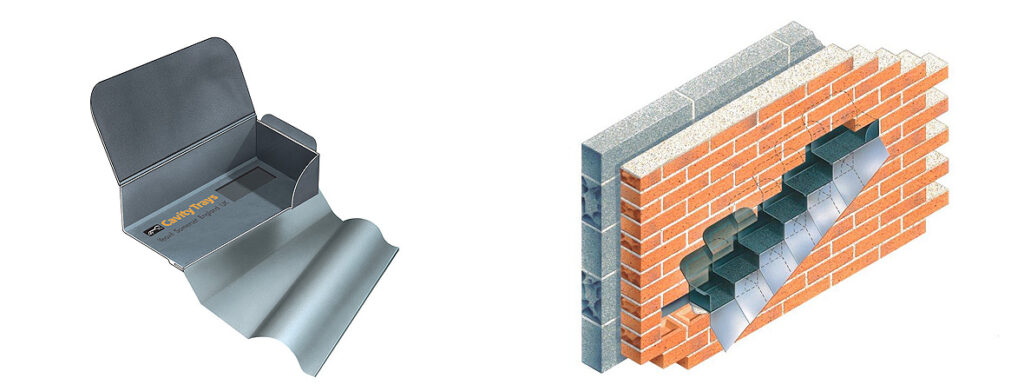In Somerset it has always been known as a ‘pig’. A pig describes a deviance in level between inner and outer skins of a cavity wall. When the wall started going up it was nowhere in sight – and according to textbooks there is no reason why it should ever appear, but it does.
Textbooks show three courses of brick equalling the height of one block. Thus the outer skin of brickwork levels with the inside skin of block work. The reality is different. They drift apart. At plate level it is not unusual to witness a buttered-up mortar bed or an additional remedying course of brick to introduce alignment.
 Illustration #1
Illustration #1
The illustration (1) shows what can happen when one tries to use a pre-shaped cloak DPC that relies upon a textbook relationship between masonry skins. The course in which the DPC cloak is built-in can be either too high or too low compared with the adjacent skin.
If one encounters this in a gable abutment, correct formation of a vertically stepping and outwardly stepping arrangement is virtually impossible to create – unless one considers cavitrays.
Type X Cavitrays (2) banish pigs because they do not require building into both masonry skins. Cavitrays are self-supporting. Furthermore, they also adjust to suit the cavity width encountered – and the cavity width can commonly differ from the intended width.
Every Type X gable abutment tray comes with its own ready-shaped flashing already bonded on. There is no raking-out mortar and returning to insert flashings and point-in – that task is eliminated. The integral lapping flashings attached to approved Cavitrays also provide greater protection compared with a conventional running flashings.
 Type X Cavity Trays (Illustration #2)
Type X Cavity Trays (Illustration #2)
Self-supporting and adjusting Type X cavitrays for gable abutments are equally at home in traditional and timber-frame construction, and are available to suit both straight and curved (concave and convex) cavity walls. Cavity Trays of Yeovil has been awarded European Technical Approval and offers the widest range of approved products.